The taste sensation that is smoked seafood has inspired a smokehouse revival in Australia and new opportunities for fishers to add value to their catches. We take a look at a few of those re-embracing this ancient food preservation technique
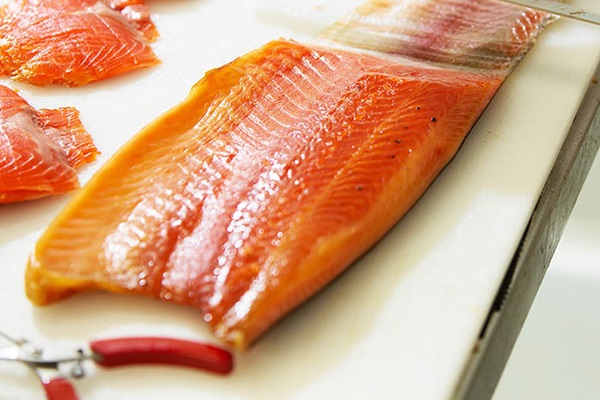 Hand processing of cold smoked salmon from Woodbridge Smokehouse.
Hand processing of cold smoked salmon from Woodbridge Smokehouse.Photo: Woodbridge Smokehouse
By Gio Braidotti
It is about the taste. There is fresh seafood and then there is the unique sensory experience created by smoke experts. Theirs is an artisanal skill of infusing the fats in fish meat with aromas derived from smouldering wood. The best of the experts achieve an inspired match between the unique fragrance of different timbers and the taste profile of salt-cured fish.
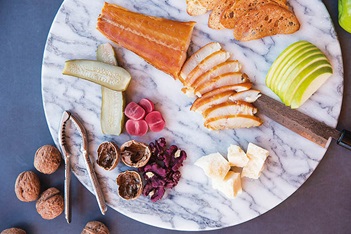 Smoked Murray Cod from Aquana Aquaculture.
Smoked Murray Cod from Aquana Aquaculture.Photo: Aquna Aquaculture
One of the more innovative pairings comes from the use of Australian native timbers. As demonstrated by Greg Rassmussen, formerly of Noosa River Smokehouse, paperbark proved an especially flavoursome choice when it came to cold smoking Atlantic Salmon, producing a deeper colour and a distinctive smoked taste.
Digging into the nuances of smoking techniques, there are two overarching methods: cold smoking, which cures but does not cook the flesh, and hot smoking, which both cures and cooks (see table ). Both preserve the meat while tenderising it and doing something almost magical to the flavour.
At the Queensland Department of Agriculture and Food (DAF), Andrew Forrest, one of Australia’s leading food scientists specialising in smoking, says that the good news for would-be smokers is that the majority of Australian native timbers are hardwoods and, therefore, suitable for use in smoking food (as opposed to softwoods, which are not suitable).
Taking advantage of this fact is BJ Plummer of Woodbridge Smokehouse located in Woodbridge, Tasmania. The smokehouse has been in operation for 15 years, but was bought by Pure Foods three years ago to retail hot and cold-smoked Atlantic Salmon and ocean trout.
In that short time, this boutique smokehouse has built an expanding export market that includes weekly deliveries to Hong Kong and Singapore. Tasmanian native hardwoods are an integral part of that success.
“The taste profile is obtained by the choice of wood used during smoking,” BJ Plummer says. “We are located in an apple orchard and we use a judicious amount of wood from the apple trees combined with local native hardwoods, such as Tasmanian oak.”
By taking this distinctive approach, Woodbridge Smokehouse reports growth across all facets of its business, from tourists visiting the smokehouse, through to online sales and shipments to domestic and international retailers.
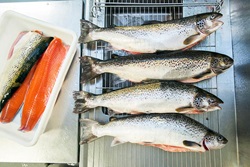
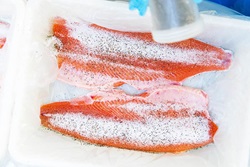
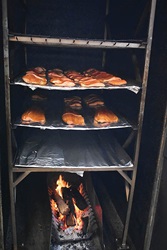
Another key aspect to achieving great results in a smokehouse is the freshness of the fish. BJ Plummer sources only A-grade quality fish from Tasmanian suppliers, Tassal, Petuna and Huon Acquaculture. This often means the seafood can be processed within just hours of being harvested. “Fresh is best and so is quality,” Andrew Forrest confirms. “That’s why smoking is a real opportunity for fishers looking to value-add with boutique products.”
Interest in creating smoked products is increasing, with the potential to increase shelf life of seafood to more than seven weeks. At the Queensland DAF Coopers Plains food research facility, Andrew Forrest has conducted hot-smoked trials with Cobia and mullet. He thinks both have great potential, especially when smoked with native wood.
Over in South Australia, fishers Glen and Tracy Hill of Coorong Wild Seafood in Meningie are successfully marketing small volumes of hot-smoked versions of their award-winning Coorong Yelloweye Mullet fillets at farmers’ markets and wineries.
The fillets are smoked using red gum sawdust, with the fillets prepared in their natural state or coated with chilli flakes or lemon pepper.
In Griffith, NSW, Aquana Aquaculture farms the native freshwater fish Murray Cod, and is preparing to launch a hot-smoked product in the next few months to complement its fresh fish.
The smoked product has been developed by Eden Smokehouse, where smoke master Stan Soroka uses oak chips – the same ones the wine industry uses to accelerate the oaking of young wines. Murray Cod has generous layers of fat in the flesh and smoking produces a mild, creamy flavour.
Aquana managing director Mat Ryan says trial product was taken to the Sydney and Melbourne Good Food & Wine Shows earlier this year where it was well-received and this has given them the confidence to pursue development.
Further south, at St Leonards in Victoria, the Bellarine Smoked Fish Company uses locally sourced tea tree to hot smoke Australian farmed Barramundi, Atlantic Salmon, Rainbow Trout and New Zealand Ora King Salmon.
Owner and chief smoking officer Jason Smith also smokes wild-caught Gemfish as another white fish option and for those who prefer wild to farmed fish, although the availability of the wild fish does fluctuate.
For fishers Karen Miller and partner Mark Gray, “wild-caught” is a feature of their business, Malanda Seafood, which has fishing vessels operating out of Cairns and Karumba, Queensland, and a retail shop in Malanda on the Queensland Atherton Tablelands.
They have begun trials with their Barramundi and Spanish Mackerel as a way to diversify their offerings for the local community and promote Queensland’s wild fisheries.
The Tarzali Lakes Smokehouse Cafe has provided samples using a mix of oak and Queensland maple for the smoking and Karen Miller says they sold everything on the night of their first tasting event. While their new seafood products are still a work in progress, she is excited about the potential to enhance their range for customers.
Harris Smokehouse, in Hahndorf, South Australia, is the oldest seafood smokehouse in Australia and offers the largest, most traditional range of fish products.
Smoke mastery at Harris Smokehouse goes back four generations to Richard Pinney, an oyster farmer on the UK coastline. He designed his own oak log smoking process to smoke Atlantic Salmon, creating a thriving business, Pinneys of Orford, which still operates. His technique arrived in Australia in 1990, brought over by his grandson, Richard Harris, and continuing with Richard’s son Adam Harris.
The range of smoked seafood includes Atlantic Salmon, Yellowtail Kingfish, kipper fillets, mackerel fillets, Cod, English Haddock, Rainbow Trout, Barramundi, prawns, salmon fins, kingfish wings, eel fillets and oysters. Visitors can also see the smoking in process at the smokehouse cellar door.
Business here is thriving, suggesting that the future for locally sourced, locally smoked seafood is in its ascendancy. Andrew Forrest says he is keen to talk with fishers to discuss new opportunities or pilot-scale trials for smoked seafood products.
| Method | Cold | Hot |
| Is curing required? | Yes | Yes |
| Smoking temperature | 20°C to 33°C | 70°C to 80°C |
| Shelf life refrigerated | 4 weeks | 7+ weeks |
| Is the meat cooked and the protein coagulated? | No, the meat remains raw but tenderised | Yes |
| Can all seafood be smoked this way and require no further cooking? | Yes. In practice, however, it is mostly restricted to Atlantic Salmon and Rainbow Trout due to the unique aesthetics of these products. | Yes |
The smoking process
Smoking seafood entails a three-step process:
- Curing with salt, either by immersing in brine or smothering meat with dry salt.
- Rinsing the salt-cured meat and drying first with towels and then refrigerating on a rack, skin side down, until a subtle glaze (called a pellicle) covers the fish’s
flesh side. - Smoking to infuse the oily component with flavours distinctive for different hardwood types, including Australian native hardwoods such as paperbark. Only hardwood timber – typically beech or mesquite – is safe to use in a smokehouse. Softwoods are not suitable due to toxins that survive combustion. If in doubt, consult a local barbecue supplier that stocks wood for smoking.
Note: Both salt curing and smoking have antibacterial properties.





